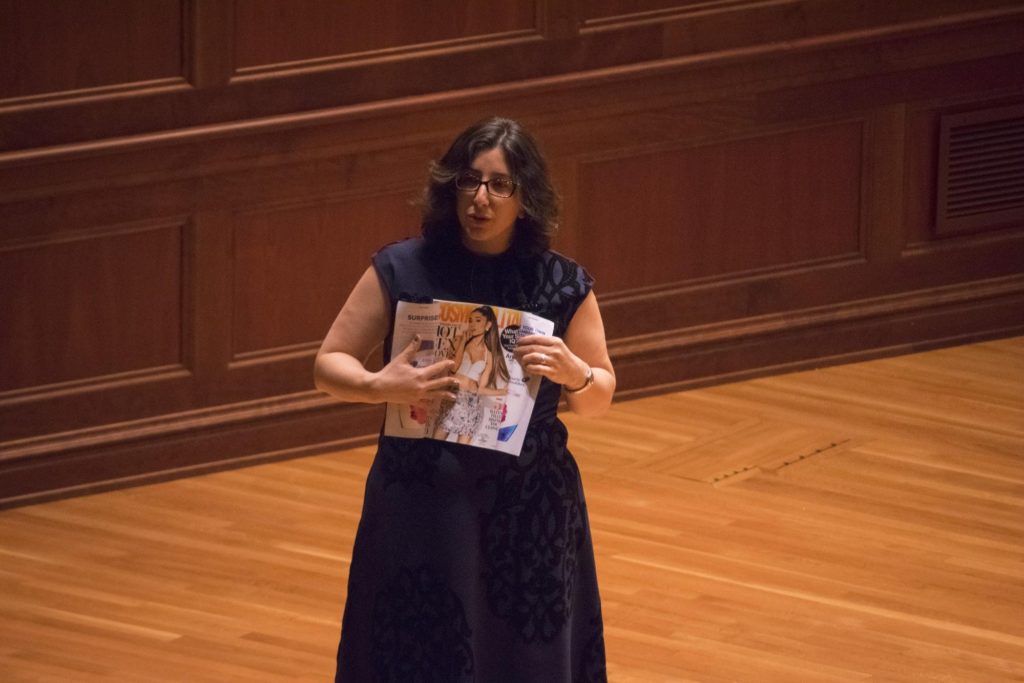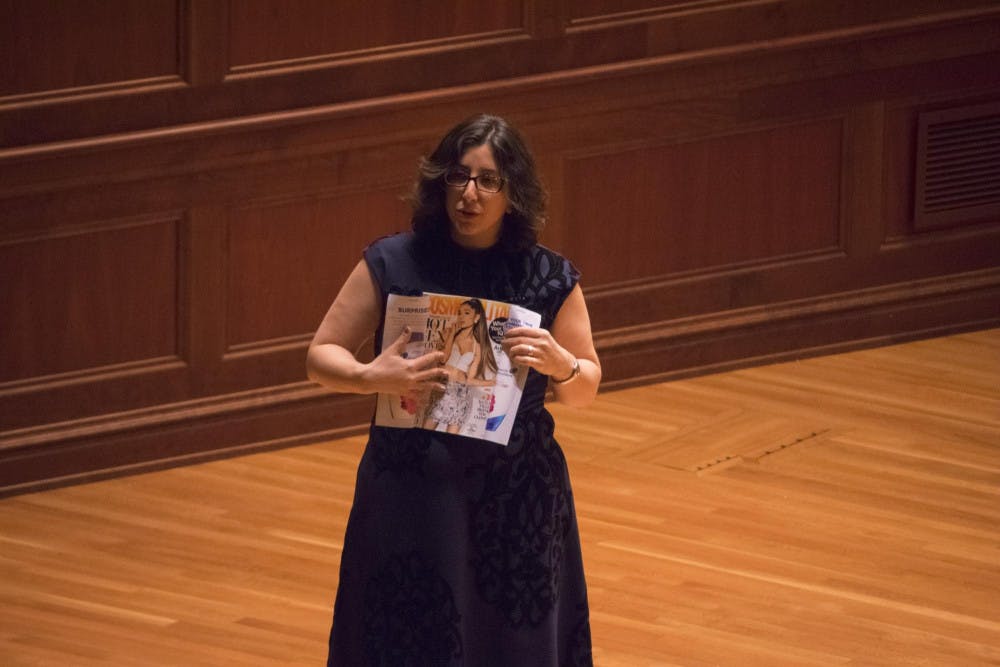Anywhere the eye may wander, it is likely to come across an ad. While advertisements are everywhere, consumers are not always able to recognize them.
Magazines are one of the many outlets in which advertisers try to reach their target audience.
Alumna Annemarie Conte (’01), executive editor of Woman’s Day Magazine, spoke to students on Friday, March 24, in Mayo Concert Hall. Woman’s Day captivates more than 22 million readers with advice and ideas regarding health, family, food, relationships, home and style, according to its Facebook page.
When talking to the students, Conte focused on both branded content and native advertising.
“Why is branded content happening now?” Conte asked.

Conte pointed to the rise of ad-blocking software in online media as the culprit.
“Because you are not paying for content, so someone has to,” Conte said. “Advertising money is down, across the board. Advertising online is on the rise, so if advertisers cannot get people to read their advertisements, they have to find another way in.”
Native advertising resembles the publication’s editorial content, but is paid for by an advertiser and intended to promote a product. Similarly, branded content is a type of advertising that uses the generating of content as a way to promote the particular brand that funds a content’s production.
“So, basically, advertisers pay for placement or the ability to give directional guidance within an editorial or format that mimics editorial,” Conte said. “Branded content tends to be more digital and native advertising tends to be more print, but they’re basically interchangeable and can depend on whatever the client wants.”
Native advertising is used mostly by big media companies because smaller companies do not have the resources, Conte said.
Conte also said brands and companies use social media platforms like Instagram for advertisement.
For example, Lord & Taylor bought a campaign in March 2015 and did not label it as paid content. The company paid “influencers” between $1,000 and $4,000 to post a photo of themselves in a specific dress with with the designer hashtag and “@Lord&Taylor” in their caption.
Lord & Taylor approved every image and every post, but in March 2016, the Federal Trade Commission ruled against Lord and Taylor, stating that its advertisements were not clear and its actions went against rules that were in place since 2009. The FTC could have hit them with a debilitating fine, but, instead, put them in a temporary “penalty box.”
“This campaign reached 11.4 million uniques in two days on Instagram and the dress sold out,” Conte said. “It was very effective.”
While traditional advertising is still popular, sponsored articles dressed up to appear to be part of the editorial content of a specific site are not only becoming more common, but proving to be successful for many companies, as well.







